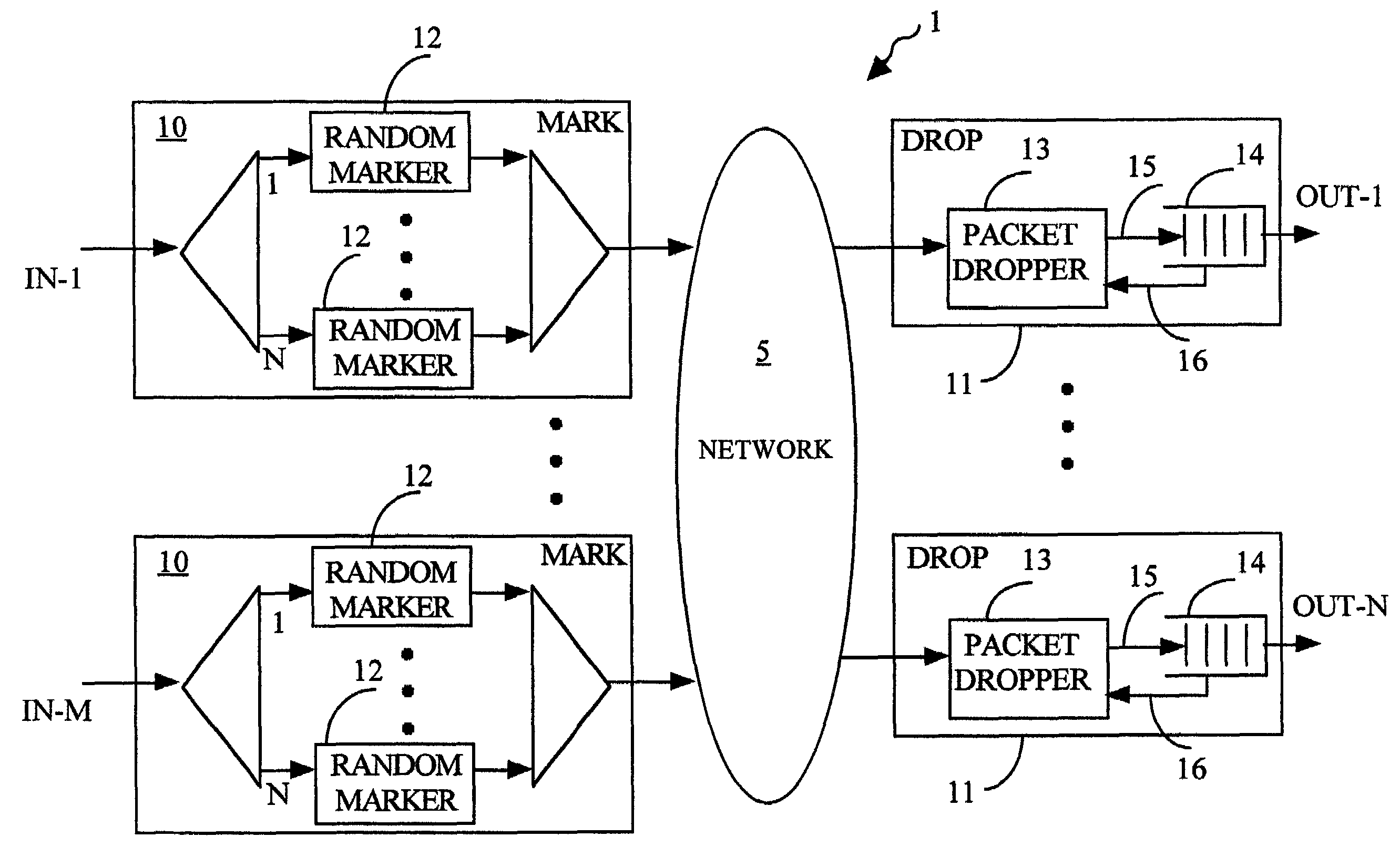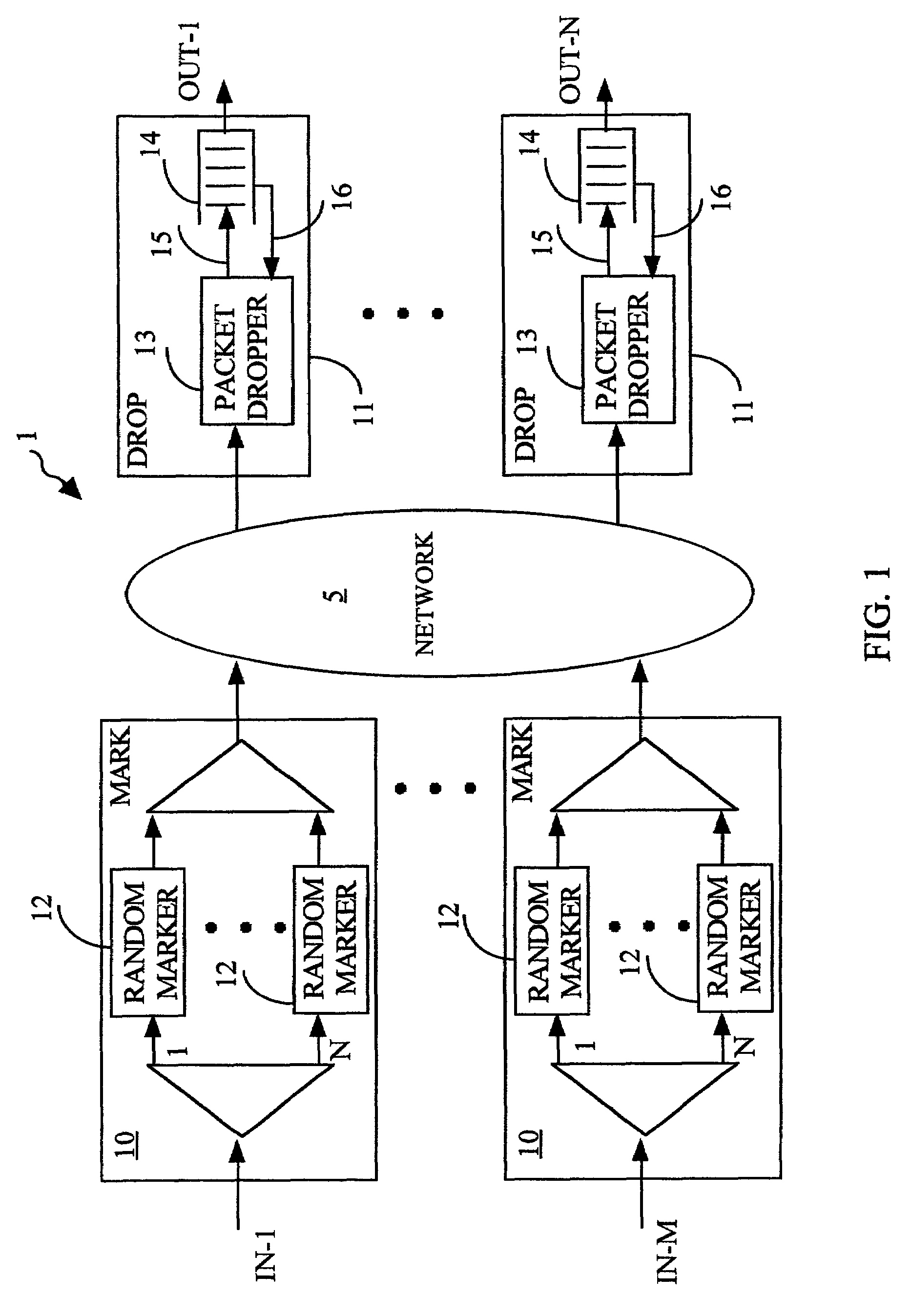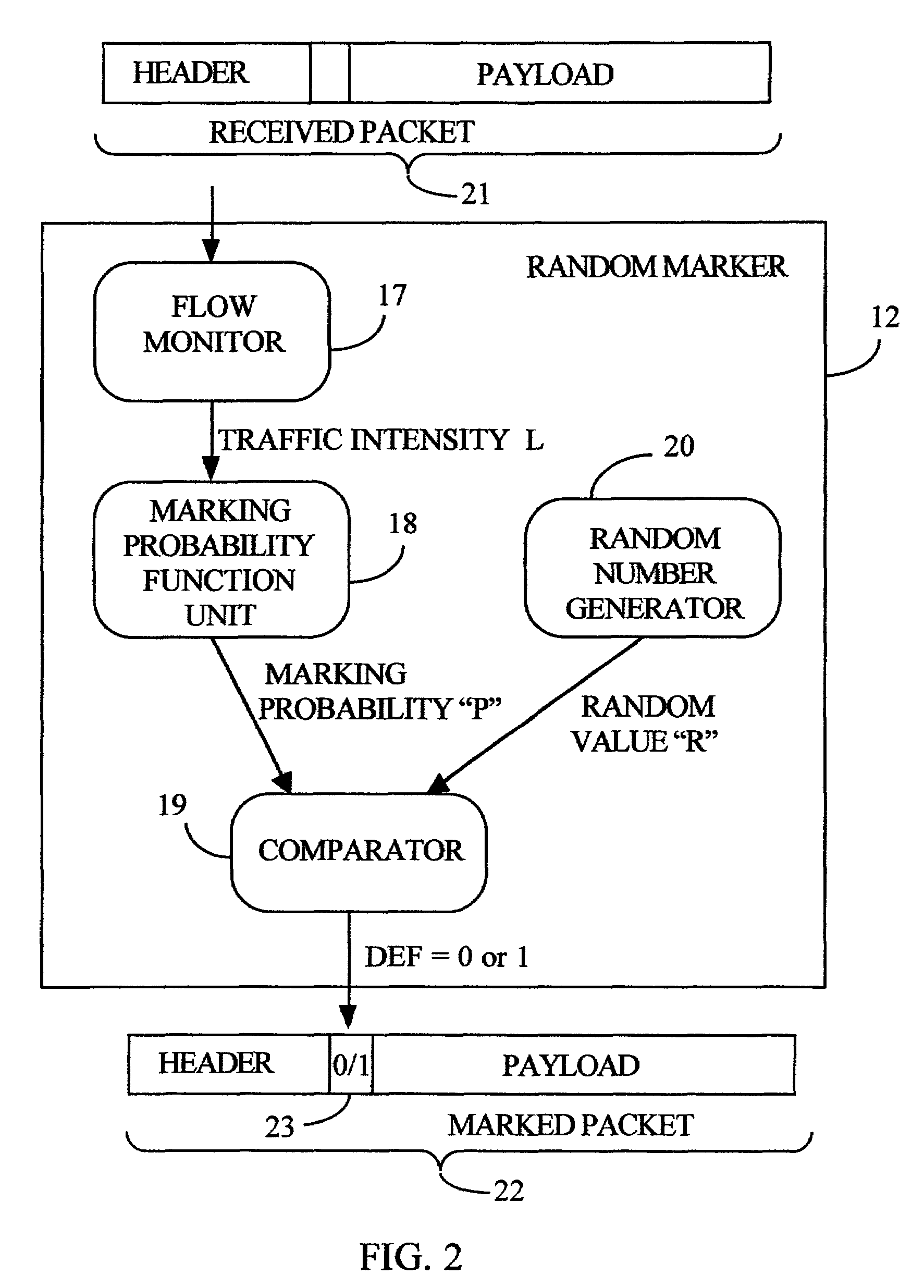Method and system for traffic management in packet networks using random early marking
a packet network and traffic management technology, applied in the field of packet network traffic management in the field of random early marking, can solve the problems of insufficient control of network congestion, overflow of packets, and approach to data flow managemen
- Summary
- Abstract
- Description
- Claims
- Application Information
AI Technical Summary
Benefits of technology
Problems solved by technology
Method used
Image
Examples
Embodiment Construction
[0046]A system 1 for traffic management in a packet network in accordance with the first embodiment of the invention is shown in FIG. 1. It includes a packet network 5, a number of “M” ingress processors 10 (blocks labeled “MARK”) having corresponding inputs IN-1 to IN-M for receiving and marking data packets to be forwarded through the network 5, and a number of “N” egress units 11 (blocks labeled “DROP”) for receiving the packets forwarded through the network, and for providing buffering and selective discard of the buffered packets. Thus, data packets are received at inputs IN-1 to IN-M of the ingress processors 10 and are destined for the outputs OUT-1 to OUT-N of the egress units 11. Each of the ingress processors 10 has “N” random markers 12, where packets are randomly marked, each random marker being responsible for those packets that are directed to one of the outputs OUT-1 to OUT-N. Correspondingly, each egress unit 11 has a packet dropper 13 for discard of the marked packe...
PUM
 Login to View More
Login to View More Abstract
Description
Claims
Application Information
 Login to View More
Login to View More - R&D
- Intellectual Property
- Life Sciences
- Materials
- Tech Scout
- Unparalleled Data Quality
- Higher Quality Content
- 60% Fewer Hallucinations
Browse by: Latest US Patents, China's latest patents, Technical Efficacy Thesaurus, Application Domain, Technology Topic, Popular Technical Reports.
© 2025 PatSnap. All rights reserved.Legal|Privacy policy|Modern Slavery Act Transparency Statement|Sitemap|About US| Contact US: help@patsnap.com



